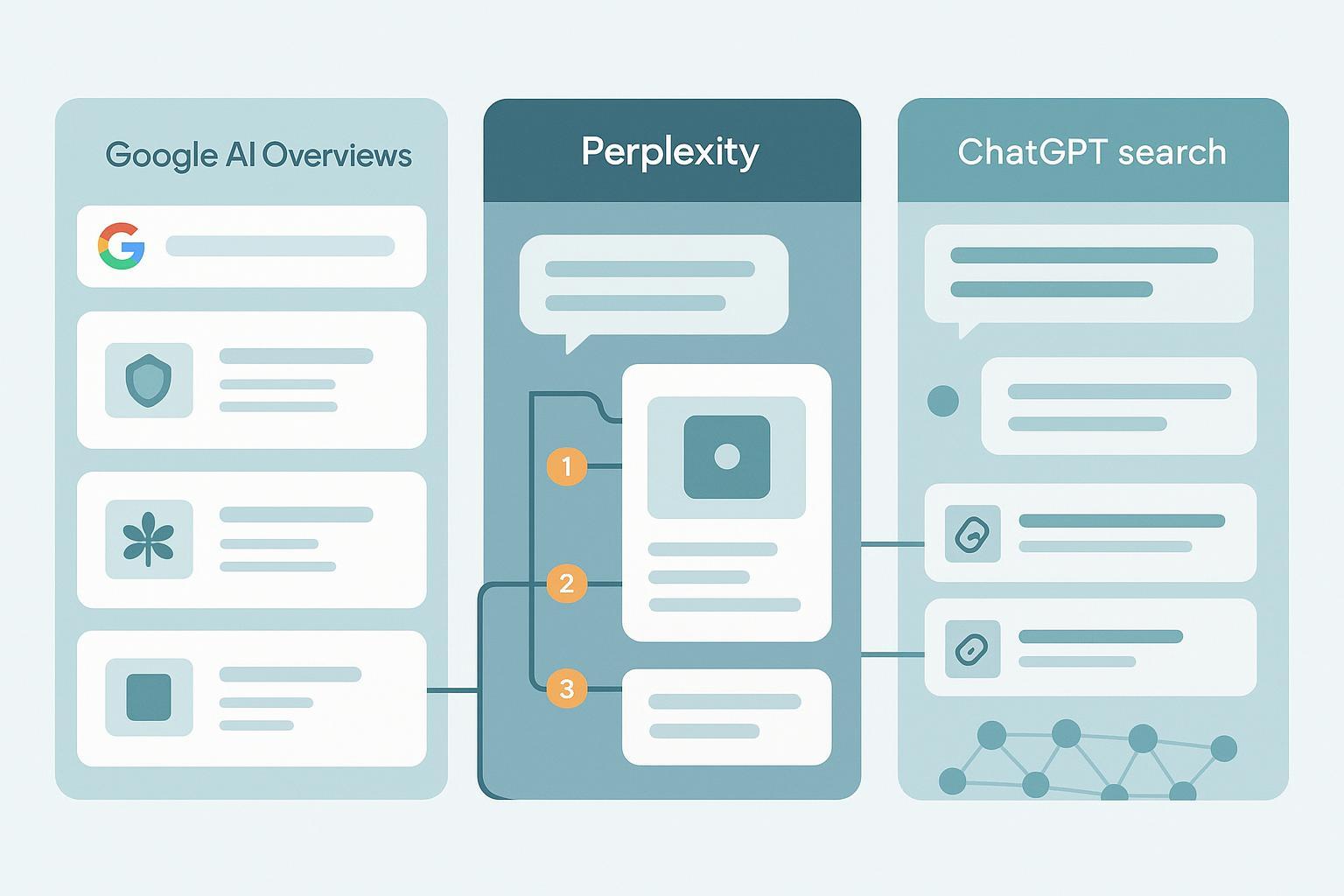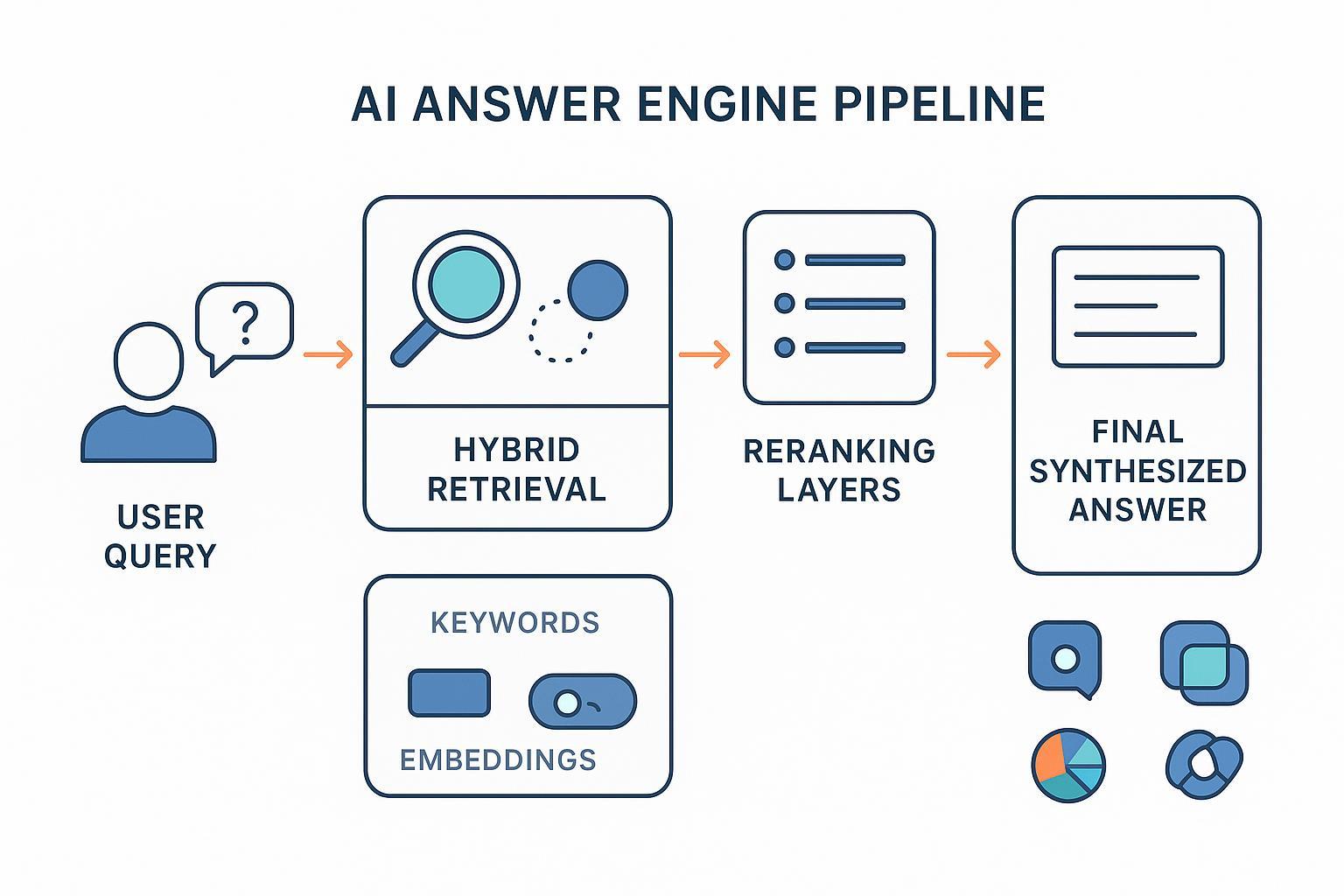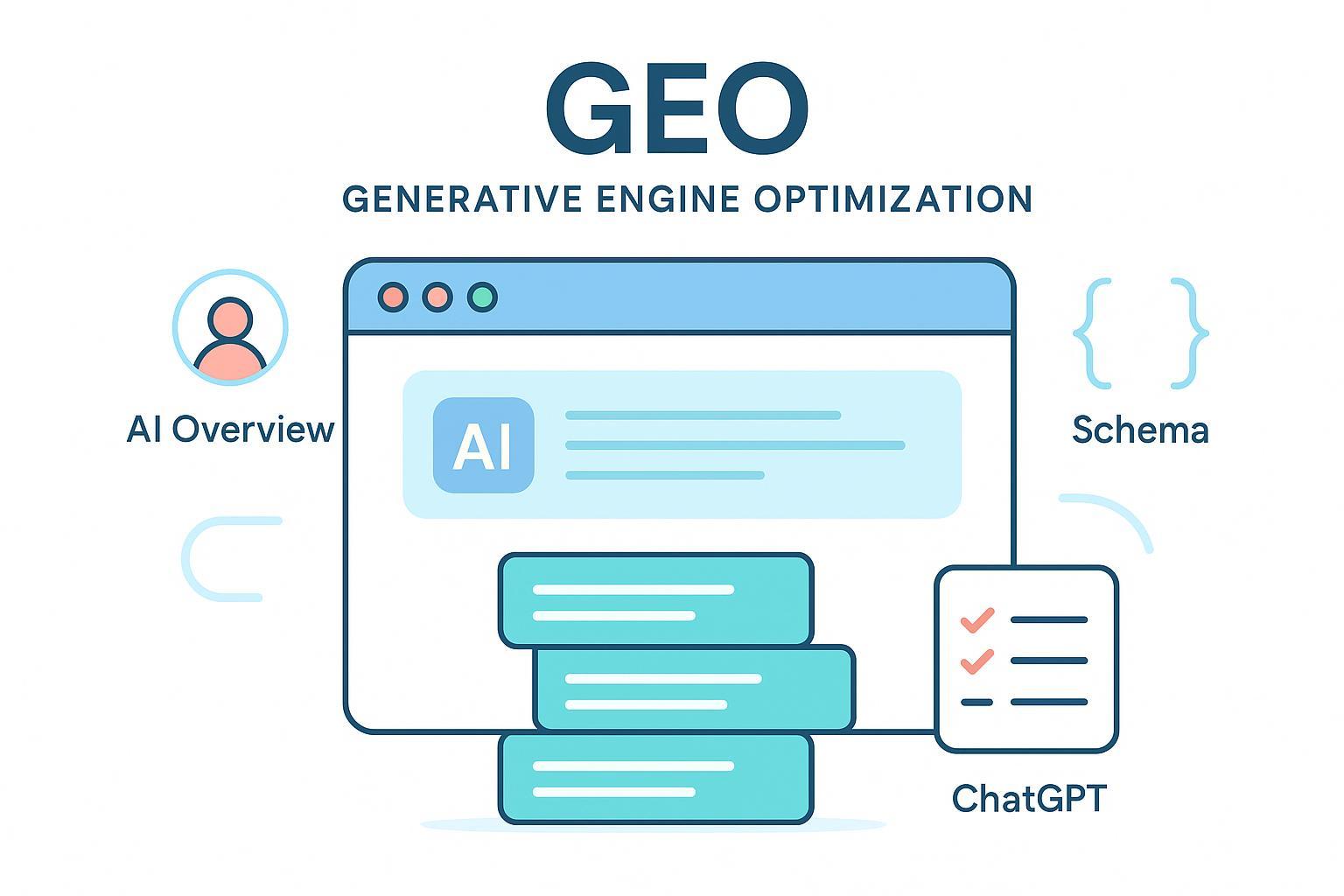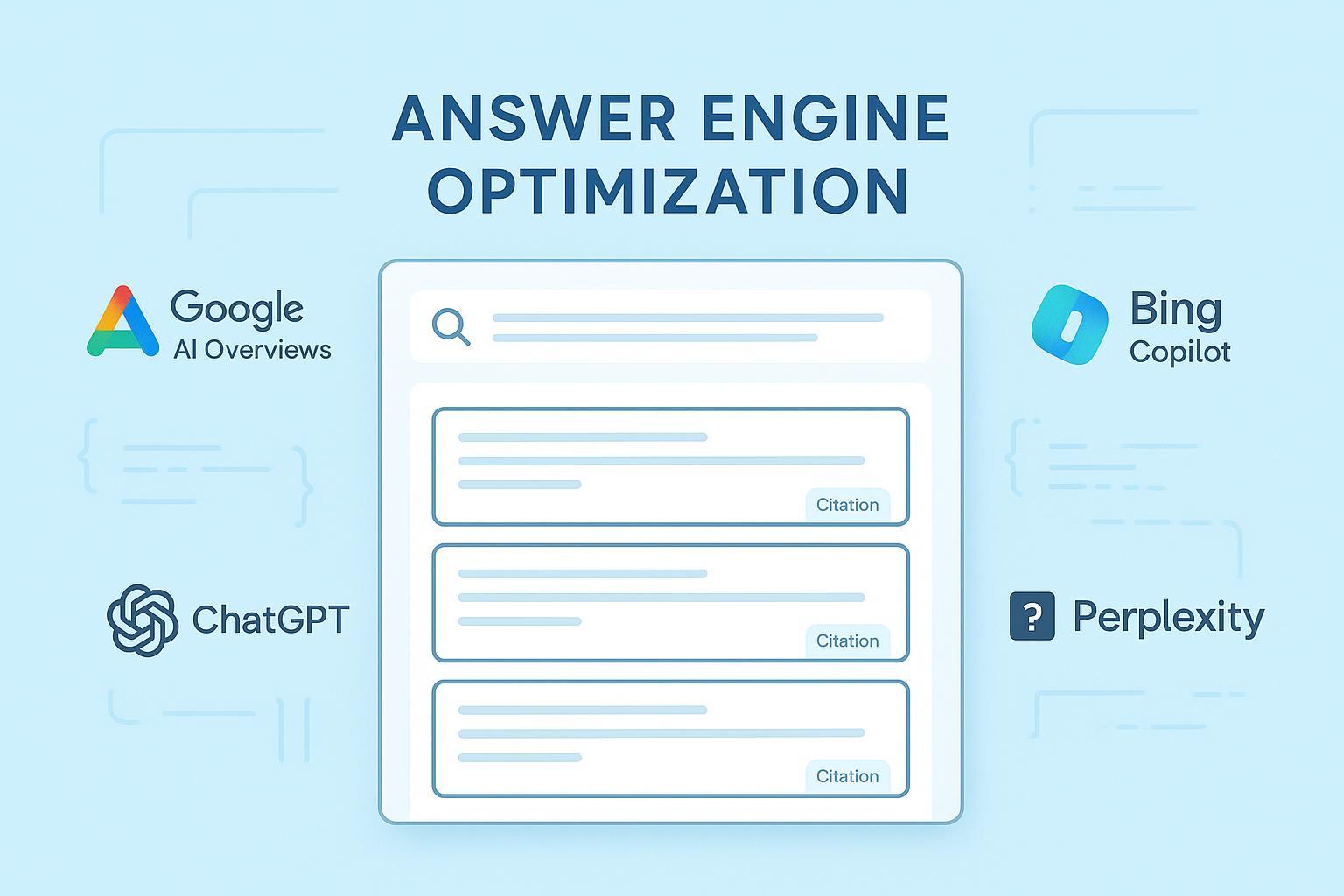How AI Answer Engines Like ChatGPT and Perplexity Are Disrupting SEO in 2025
AI answer engines like ChatGPT & Perplexity are making traditional SEO obsolete. See 2025 data, zero-click stats & action steps for AEO-ready content.


AI answer engines are quietly rewiring user behavior. In 2025, Google’s AI Overviews/AI Mode, Perplexity, and ChatGPT Search increasingly resolve informational intent in the interface—often without a click. For marketers and SEO teams, the consequence is clear: the era of “win the ten blue links” is fading, and a new optimization layer—Answer Engine Optimization (AEO)—is rising.
The signal: prevalence and click behavior have shifted
Across multiple 2025 datasets, AI summaries are showing up more often and suppressing downstream clicks for many informational queries:
- In large-scale tracking of 10M+ keywords, AI Overviews appeared in roughly 13.14% of U.S. desktop queries by March 2025, up from 6.49% in January, according to the Semrush AI Overviews study (2025). Search Engine Land noted the same March figure in its coverage (2025).
- User click propensity drops when AI summaries appear. A Pew cohort in mid-2025 found users clicked links in 8% of visits with an AI summary versus 15% without—about a 47% relative reduction, per the Pew Research Center short read (2025).
- Independent publisher/agency analyses echo declines. Digital Content Next reported #1 organic CTR falling from 7.3% (Mar 2024) to 2.6% (Mar 2025) on AI Overview keywords, a 34.5% drop, summarized in Search Engine Land’s May 2025 report. A broader dataset synthesized by Search Engine Journal cited top-result CTR declines of ~32–39% depending on position and query class (2025).
- As a baseline, the web was already moving toward “zero-click” journeys before AI summaries. The SparkToro/Similarweb study found 58.5% (U.S.) and 59.7% (EU) of Google searches resulted in no external click in 2024, per the SparkToro zero‑click study (2024).
Google presents the other half of the story: increased usage and “higher quality clicks.” In its August 2025 post, Google stated AI experiences are “driving more queries and higher quality clicks,” as described in Google’s Search blog (Aug 2025). Whether those “higher quality clicks” offset overall CTR declines varies by niche and intent.
What’s actually changing—and what isn’t
- Answer-first UX: AI modules synthesize multiple sources and present the gist upfront. For many informational intents, that means fewer downstream clicks.
- Inclusion mechanics: Organic quality still matters. Studies and audits show meaningful domain/URL overlap between AI answers and the top 10 organic results, indicating E‑E‑A‑T and technical quality remain prerequisites. Semrush found substantial overlap patterns between AI Mode and AI Overviews in 2025, reinforcing that trusted domains are often cited.
- Volatility: AI Mode sources can vary across sessions and devices. Expect higher variance than classic SERPs, and plan to monitor presence and prominence rather than fixate on a single static ranking.
Meanwhile, some fundamentals persist:
- Google’s market share and discovery gravity remain dominant. For commercial/complex queries, multi‑click journeys persist, and high‑intent content still earns traffic—especially where users need deeper detail, comparisons, or tools.
- E‑E‑A‑T and structured data continue to help machines understand and quote your content. Google’s guidance in May 2025 reiterated helpful content, clear authorship, and appropriate schema as best practices, per Google Search Central’s “Succeeding in AI search” (May 2025).
Strategic implications for 2025
- Treat AI answers as a parallel discovery layer. Your goal isn’t only to rank; it’s to be included and cited where the answer is synthesized.
- Invest in brand demand. Branded queries, direct visits, and community engagement offset visibility declines in generic informational searches.
- Design content for citation. Give AI systems clean, citable blocks: succinct definitions, step‑by‑step methods, tables, and FAQ/Q&A patterns with explicit claims and sources.
- Track new KPIs that reflect AI visibility rather than only blue‑link CTR.
For baseline demand context and seasonality when planning topics, consult the Google Search Statistics and Trends explainer for macro patterns you can align with your editorial calendar.
Practitioner playbook: Answer Engine Optimization (AEO)
Focus on five pillars to increase your chances of being cited:
-
Structure and markup
- Use descriptive H2/H3s.
- Add Q&A/FAQ blocks, succinct “definition” paragraphs, steps/tables.
- Implement schema where appropriate: FAQPage, HowTo, Organization, Person, Product, Article.
-
Sourceability and citations
- Publish primary data points and original charts.
- Use descriptive anchor text to cite authoritative sources (publisher + year visible).
- Keep HTML clean; avoid heavy JS that obscures content.
-
Entity clarity and E‑E‑A‑T
- Align entities with Schema.org/Wikidata.
- Include author bios with credentials; maintain robust About/Contact pages.
-
Content granularity
- Create tightly scoped, intent‑specific modules that AI can quote verbatim (e.g., “CAC payback formula + worked example”).
-
Freshness protocol
- Update stats‑led pieces monthly; add a visible change‑log and “Updated on {date}” tags.
AEO micro‑example: structuring a definition + steps block
Here’s a practical way to structure a section so AI engines can easily extract it:
- Definition: 2–3 sentences that state what the concept is and why it matters.
- Steps: 3–5 bullet points with clear actions, one idea per line.
- Data point: One recent stat with a publisher + year anchor.
- FAQ: One Q&A that answers a common follow‑up.
You can author this pattern in most CMSs. Using QuickCreator, for instance, you can select a Q&A block, add an “Executive Summary” paragraph, and attach appropriate schema to improve machine readability. Disclosure: QuickCreator is our product.
Measurement: how to track AI visibility and mitigate CTR declines
Classic ranking reports won’t capture AI answer inclusion. Add these methods and metrics:
- Referrer/log analysis: Identify traffic from AI surfaces where referrers exist; use server logs to spot AI‑integrated browsers/apps.
- Manual panels: Sample priority queries weekly; record AI Overview/AI Mode presence and whether your pages are cited.
- Segment CTR deltas: Compare CTR for queries with vs. without AI summaries using Search Console and analytics.
- New KPIs to watch:
- Answer Surface Rate (ASR): The % of target topics where your content is cited in AI answer modules. Search Engine Land highlighted ASR and related generative search KPIs in a June 2025 roundup.
- AI citation count and prominence: Are you a lead source or a secondary citation?
- Snippet/chunk retrieval frequency: How often are your structured blocks quoted?
To standardize workflows for these checks and content structures, see the step‑by‑step guide to using QuickCreator for templating repeatable AEO sections in your editorial process.
Multi‑engine considerations: Google, Perplexity, ChatGPT
- Google AI Overviews/AI Mode: Synthesizes multiple sources; citations appear in the module. Organic quality correlates with inclusion; structured, helpful pages increase extractability.
- Perplexity: Emphasizes visible citations and often cites more sources by default. Up‑to‑date, credible content—with clear facts, clean HTML, and authority—tends to be preferred.
- ChatGPT Search: Browsing retrieves recent sources; answers are conversational with fewer citations than Perplexity. Authoritative, clearly written pages with updated stats and clean structure fare better.
What to do next (and how often)
- Prioritize 10–20 core informational topics where your brand must be discoverable.
- Refactor those pages with definition blocks, step/tables, Q&A, and schema.
- Establish a monthly refresh cadence for stats and examples; track ASR and citation presence.
- Create comparison and buyer‑enablement content for commercial intents where users still click.
If you need a fast way to operationalize structured blocks, schema, and refresh cadences inside a unified workflow, consider using your existing CMS plus lightweight AEO templates—or an AI‑native editor. A soft option is to create templates and checklists in your team’s tool of choice; platforms like QuickCreator can help implement these patterns without heavy dev work.
Methods & sources
This analysis synthesizes current‑year evidence and official guidance. Key datasets include Semrush’s 2025 AI Overviews prevalence and overlap studies; publisher/agency CTR audits summarized by Search Engine Land and Search Engine Journal in 2025; the 2024 SparkToro/Similarweb zero‑click baseline; and Google’s 2025 product posts and developer guidance.
- Prevalence: Semrush AI Overviews study (2025); corroborated by Search Engine Land.
- CTR deltas: Pew Research Center (2025); Search Engine Land’s May 2025 report.
- Zero‑click baseline: SparkToro/Similarweb study (2024).
- Google stance and guidance: Google Search blog (Aug 2025); Search Central guidance (May 2025).
Mini change‑log
- Updated on 2025‑10‑03: Incorporated 2025 Semrush prevalence, Pew CTR cohort, and Google Aug 2025 positioning; reinforced ASR tracking guidance.
By reframing SEO for answer‑first interfaces—structuring content for extractability, building brand demand, and measuring AI visibility—you’ll stay discoverable even as traditional blue‑link CTR declines. The teams that treat AI answers as a parallel layer today will own mindshare tomorrow.





